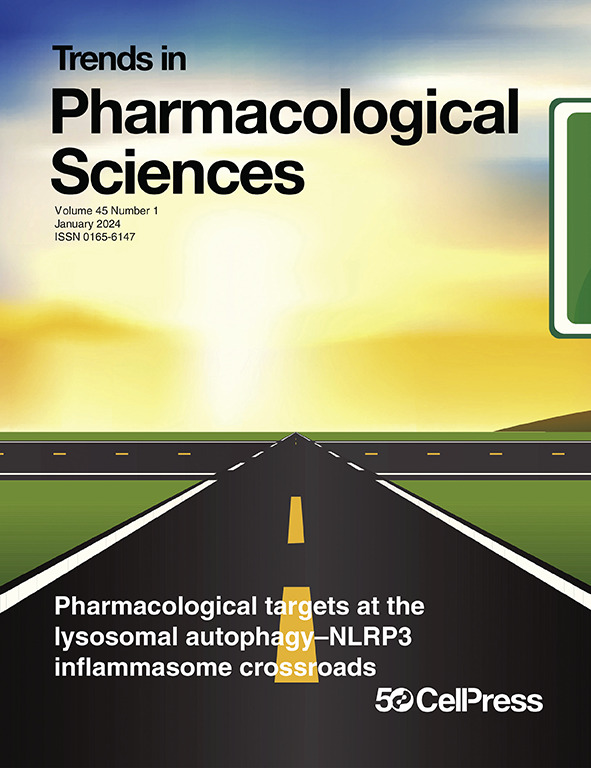通过诱导募集PML-NB限制TDP-43聚集。
IF 19.9
1区 医学
Q1 PHARMACOLOGY & PHARMACY
Trends in pharmacological sciences
Pub Date : 2025-07-01
Epub Date: 2025-06-05
DOI:10.1016/j.tips.2025.05.012
引用次数: 0
摘要
TAR DNA结合蛋白43 kD (TDP-43)聚集与几种神经退行性疾病有关,限制TDP-43聚集可提供治疗益处。最近,Wagner等人利用诱导接近PML来提高TDP-43在应激下的溶解度。从机制上讲,这一策略触发了TDP-43上的summoyl化-泛素化级联反应,并将TDP-43划分为早幼粒细胞白血病核小体(pml - nb)。本文章由计算机程序翻译,如有差异,请以英文原文为准。
Limiting TDP-43 aggregation by induced recruitment to PML-NB.
TAR DNA binding protein 43 kD (TDP-43) aggregation is associated with several neurodegenerative diseases and limiting TDP-43 aggregates could offer therapeutic benefit. Recently, Wagner et al. utilized the induced proximity to PML for enhancing TDP-43 solubility under stress. Mechanistically, this strategy triggers a SUMOylation-ubiquitylation cascade on TDP-43 and the compartmentalization of TDP-43 to the promyelocytic leukemia-nuclear bodies (PML-NBs).
求助全文
通过发布文献求助,成功后即可免费获取论文全文。
去求助
来源期刊
CiteScore
23.90
自引率
0.70%
发文量
132
审稿时长
6-12 weeks
期刊介绍:
Trends in Pharmacological Sciences (TIPS) is a monthly peer-reviewed reviews journal that focuses on a wide range of topics in pharmacology, pharmacy, pharmaceutics, and toxicology. Launched in 1979, TIPS publishes concise articles discussing the latest advancements in pharmacology and therapeutics research.
The journal encourages submissions that align with its core themes while also being open to articles on the biopharma regulatory landscape, science policy and regulation, and bioethics.
Each issue of TIPS provides a platform for experts to share their insights and perspectives on the most exciting developments in the field. Through rigorous peer review, the journal ensures the quality and reliability of published articles.
Authors are invited to contribute articles that contribute to the understanding of pharmacology and its applications in various domains. Whether it's exploring innovative drug therapies or discussing the ethical considerations of pharmaceutical research, TIPS provides a valuable resource for researchers, practitioners, and policymakers in the pharmacological sciences.

 求助内容:
求助内容: 应助结果提醒方式:
应助结果提醒方式:


